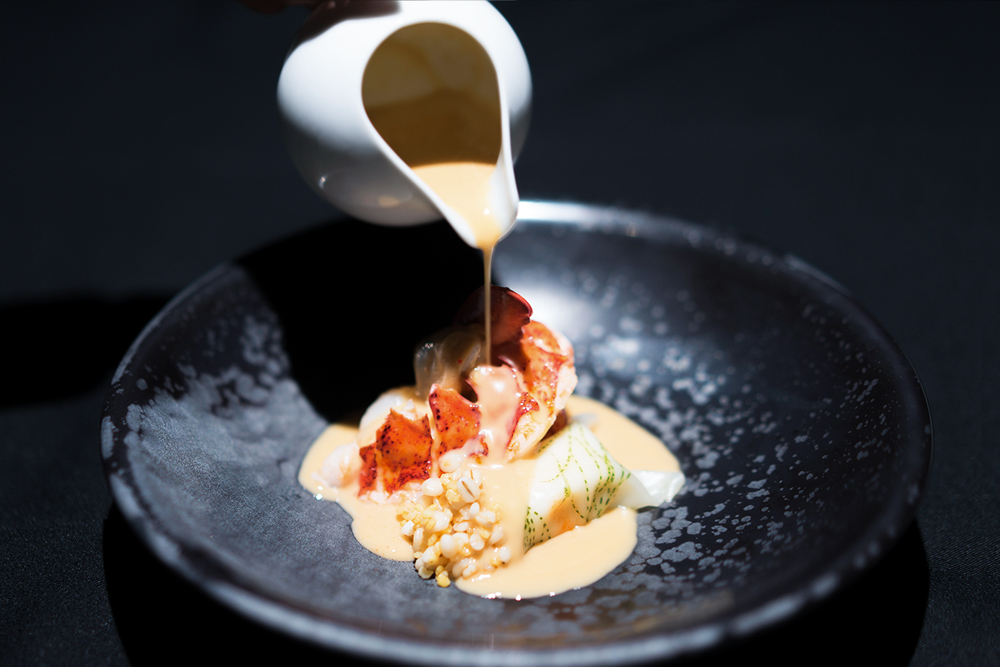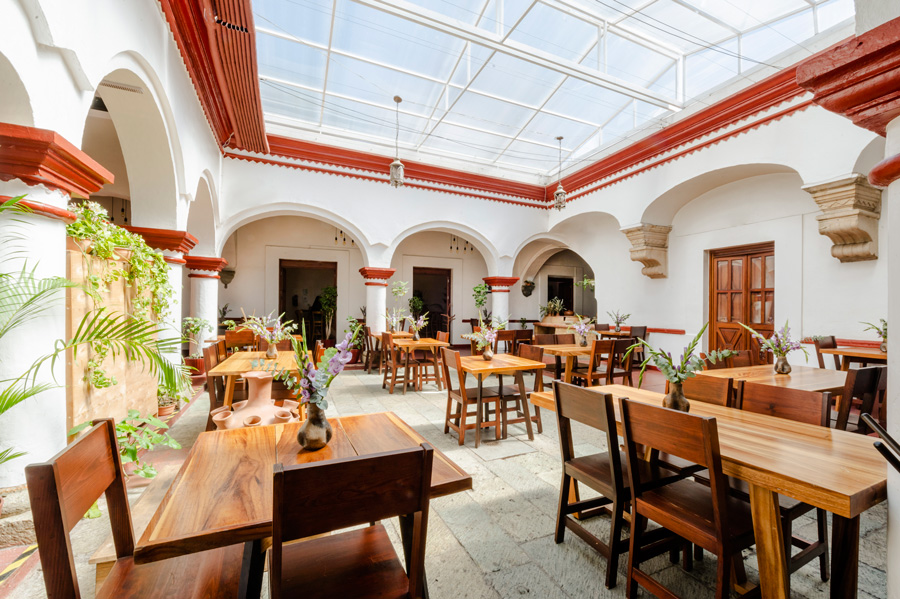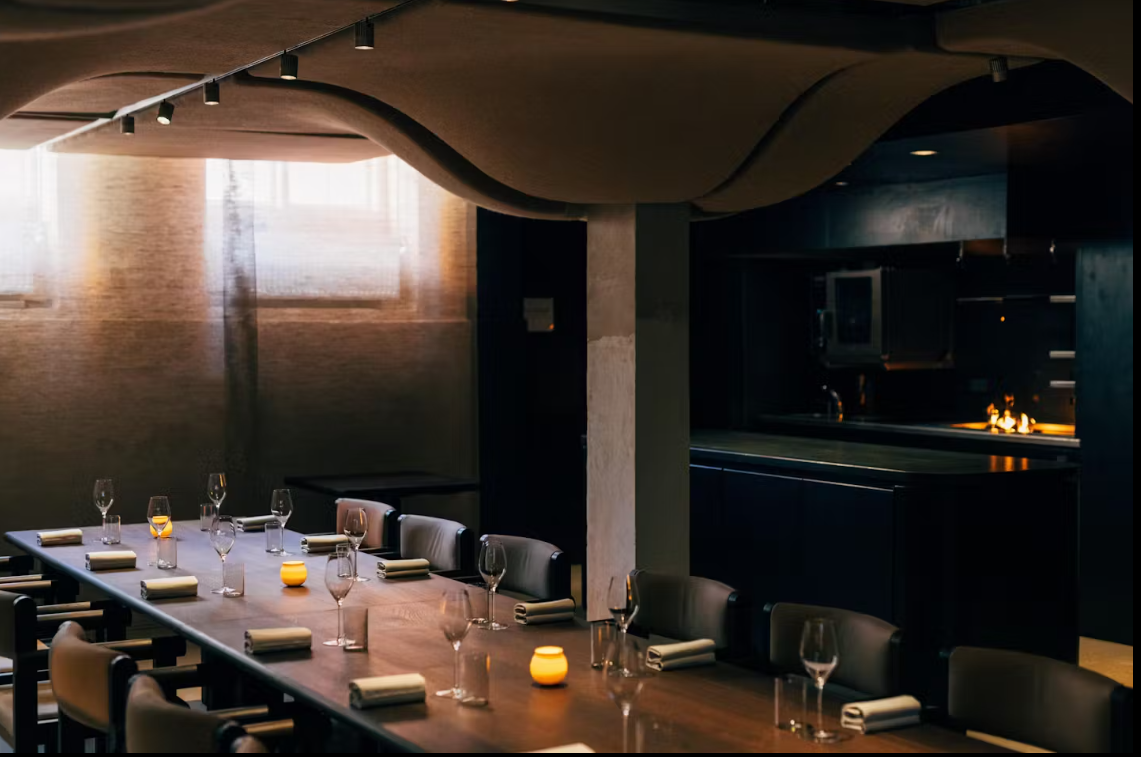GASTRONOMICAL CAPITALS OF THE PLANET

TOKYO
In 2025, 170 restaurants in Tokyo were awarded Michelin stars, making the Japanese capital the most awarded gastronomic destination on the planet, a status it has maintained for 18 years. The Japanese capital boasts over 100,000 restaurants (just think about that!), and visiting many of them reveals different facets of ancient Japanese culture.
At Daigo, Yusuke Nomura, a fourth-generation chef from a family of chefs, celebrates the traditions of Japanese Buddhist temple food (shojin ryori). Enjoy a seasonal vegetarian menu in the traditional kaiseki style – dishes form a unified composition, appealing to the five senses.
MoonFlower Sagaya Ginza, from the creators of teamLab Planets, specializes in dishes featuring marbled Saga Wagyu beef and seasonal ingredients. During dinner, guests watch as interactive flowers bloom on ceramic tableware from Arita—a village in Kyushu where the porcelain industry developed since the 17th century—and on the walls of the dining room, each with its own unique season.
At NARISAWA, Yoshihiro Narisawa presents his signature take on satoyama cuisine, typical of Japanese mountain villages where people have been at one with nature for centuries. Seasonal dishes, using ingredients sourced from the "zero kilometer" principle, are served on traditional lacquerware, following the omakase approach.
At Ninja Tokyo, dining resembles a theatrical performance. Guests are transported to a ninja settlement with secret paths, mist, and a Japanese garden. They are served a 6-, 9-, or 10-course menu based on omi beef, and a cake shaped like Mount Fuji or a ninja castle is served for the festive table. Takehiro Nobukuni, who worked closely with Joël Robuchon for many years, is responsible for the wine list.

OAXACA
For centuries, the state of Oaxaca has remained the culinary center of Mexico. The local cuisine, known as the "cuisine of 1,001 flavors," differs not only from that offered in other states but also within Oaxaca itself. Representatives of 16 ethnic groups live here, some of whom escaped the influence of the conquest, preserving their centuries-old traditions. Eight microclimates, from the Pacific coast to the Sierra Madre del Sur mountain range, provide a diverse range of produce, from corn and beans to a variety of tropical fruits.
The recipes you'll find in most restaurants in the state have been passed down from generation to generation. One of the state's culinary symbols is tlayuda, a corn tortilla filled with queso cheese, tomatoes, avocado, meat, and beans. Oaxaca is also famous for its black mole.
This sauce consists of over 30 ingredients, including dark chocolate, roasted nuts, pumpkin seeds and chili, onions and garlic, and erba santa. Lighter, multicolored versions are also available. Enjoy black mole with meat or a "trio" of different colored sauces at Las Quince Letras, a restaurant opened 33 years ago in the historic center of Oaxaca. Its co-founder and chef, Celia Florian, also heads the Alliance of Chefs of Traditional Oaxacan Cuisine. Or try Pilar Cabrera's La Olla: the restaurant has been around for over 30 years and now also houses a culinary school.
Traditional cuisine is served at Miguel Mijanzos's Ancestral Cocina Tradicional and Alejandro Ruiz's Casa Oaxaca El Restaurante, Thalia Barrios Garcia's Levadura de Olla, and Tierra Antigua, which celebrates Zapotec cuisine. For a truly immersive regional experience, visit the local markets.

COPENHAGEN
The "New Nordic Cuisine" was born in Copenhagen, the culinary capital of the Nordic countries, in 2004. One of its founders is René Redzepi, chef and co-founder of Noma, a five-time winner of the World's 50 Best Restaurants list and holder of three regular and one green Michelin star.
New Nordic Cuisine is based on local, seasonal ingredients, and many restaurants have their own gardens. Forest-harvested mushrooms, berries, and wild herbs are also used. Seaweed and juniper provide unique flavors. Smoking is a traditional method of preparing fish and game.
Of the 282 Northern European restaurants featured in the 2025 Michelin Guide, 81 are located in Copenhagen and its surrounding areas. Besides Noma, there's the three-star Geranium, which won the title of best restaurant on the planet in 2022. Its co-founders, Rasmus Kofoed and Søren Lødet, make up for the lack of meat with seafood, mushrooms, and an abundance of vegetables. Try their vegetarian kebabs and non-alcoholic cocktails based on vegetables, herbs, and spices. A tasting of the 20-course set takes at least three hours.
At the family-run Jordnær, Erik Vilgård complements the culinary traditions of his native region with Japanese ones. The restaurant opened in 2017 and, in its third year of operation, earned two Michelin stars, and a third in 2024.
A vegan restaurant, Ark, has a green Michelin star, serving excellent dishes using mushrooms from its own farm, open to restaurant guests. Alouette in the King's Garden in the city center has both a green and a regular star. Tasting sets here include 12-15 dishes, and the meal itself lasts 2.5 hours.




